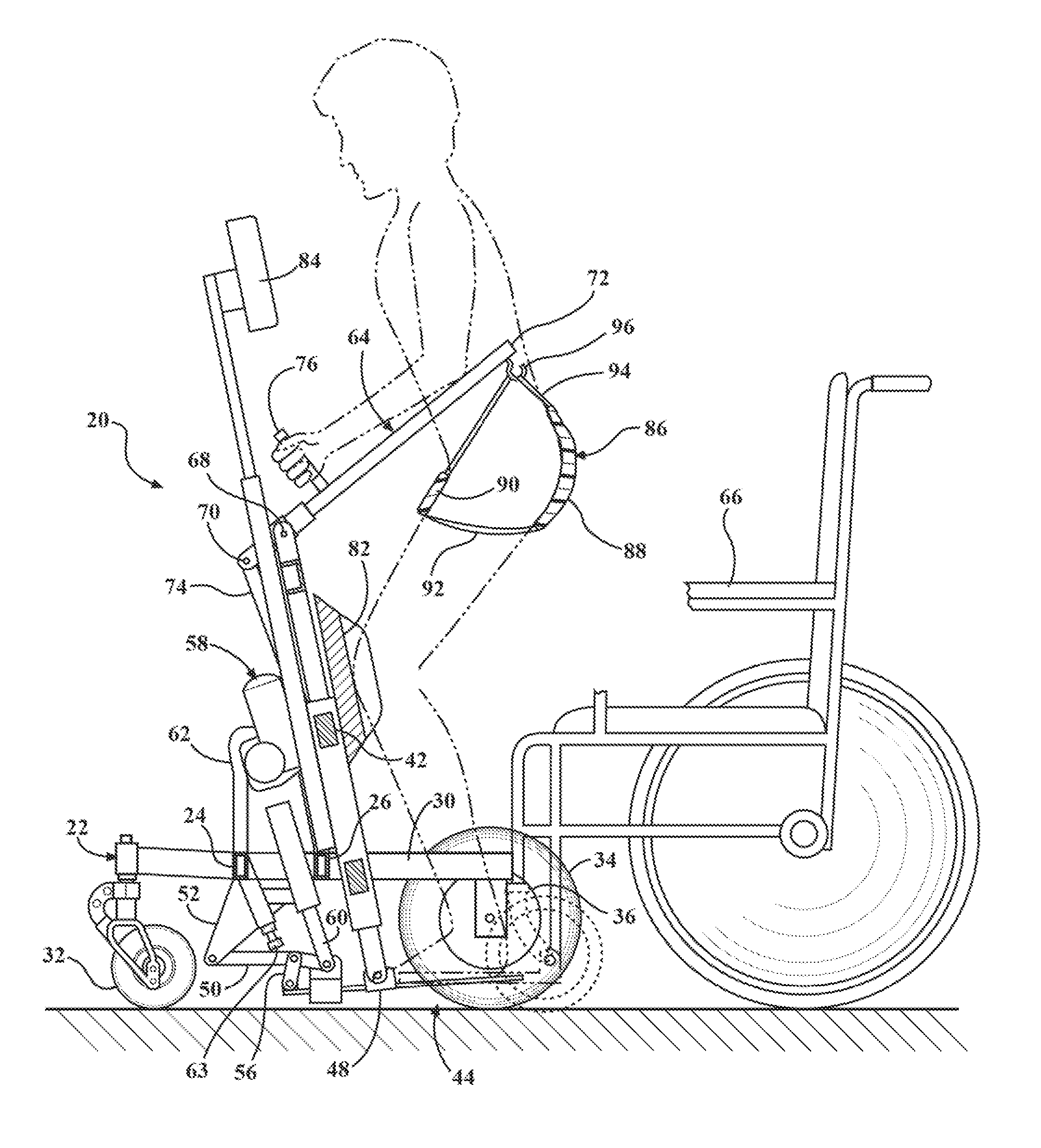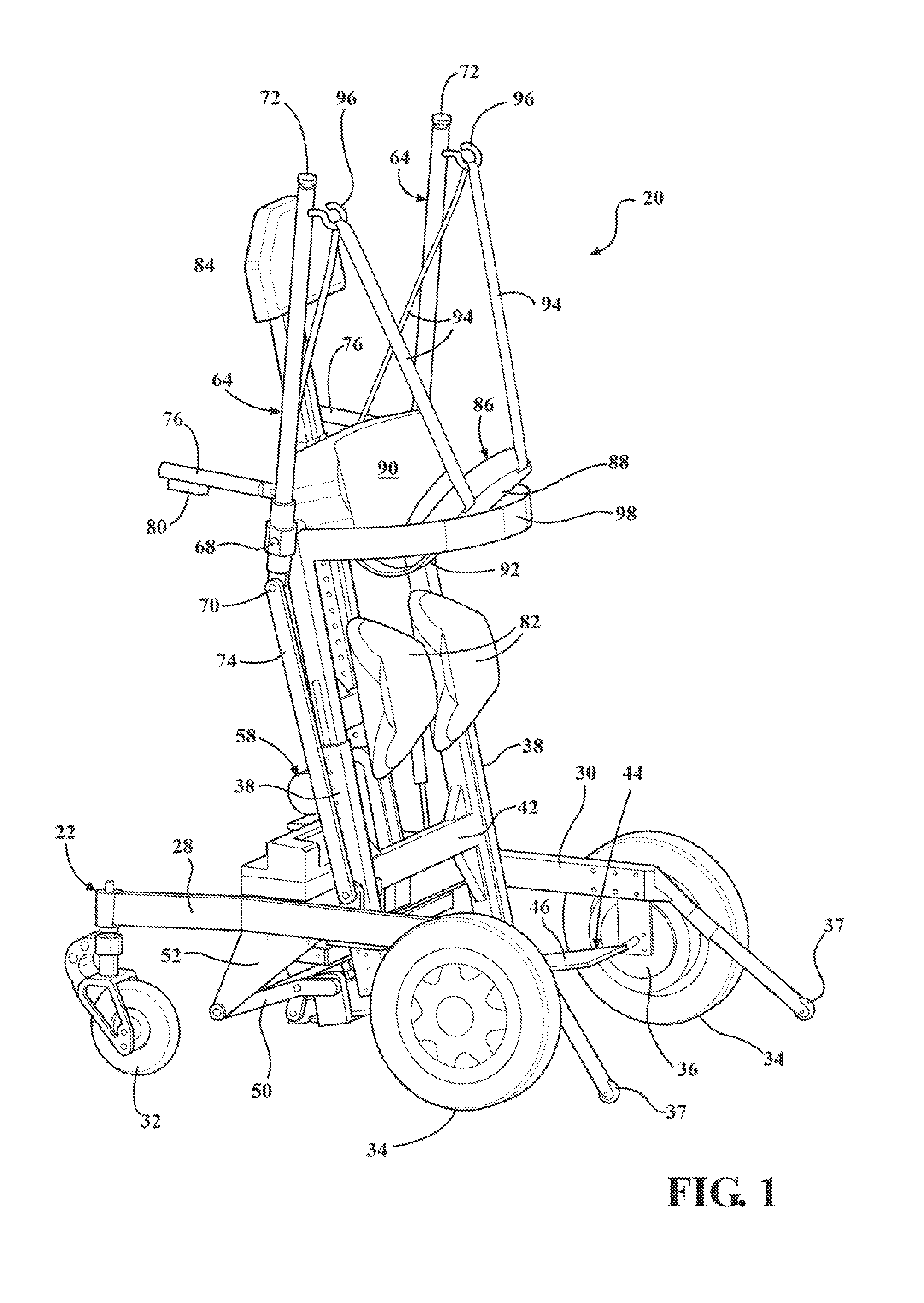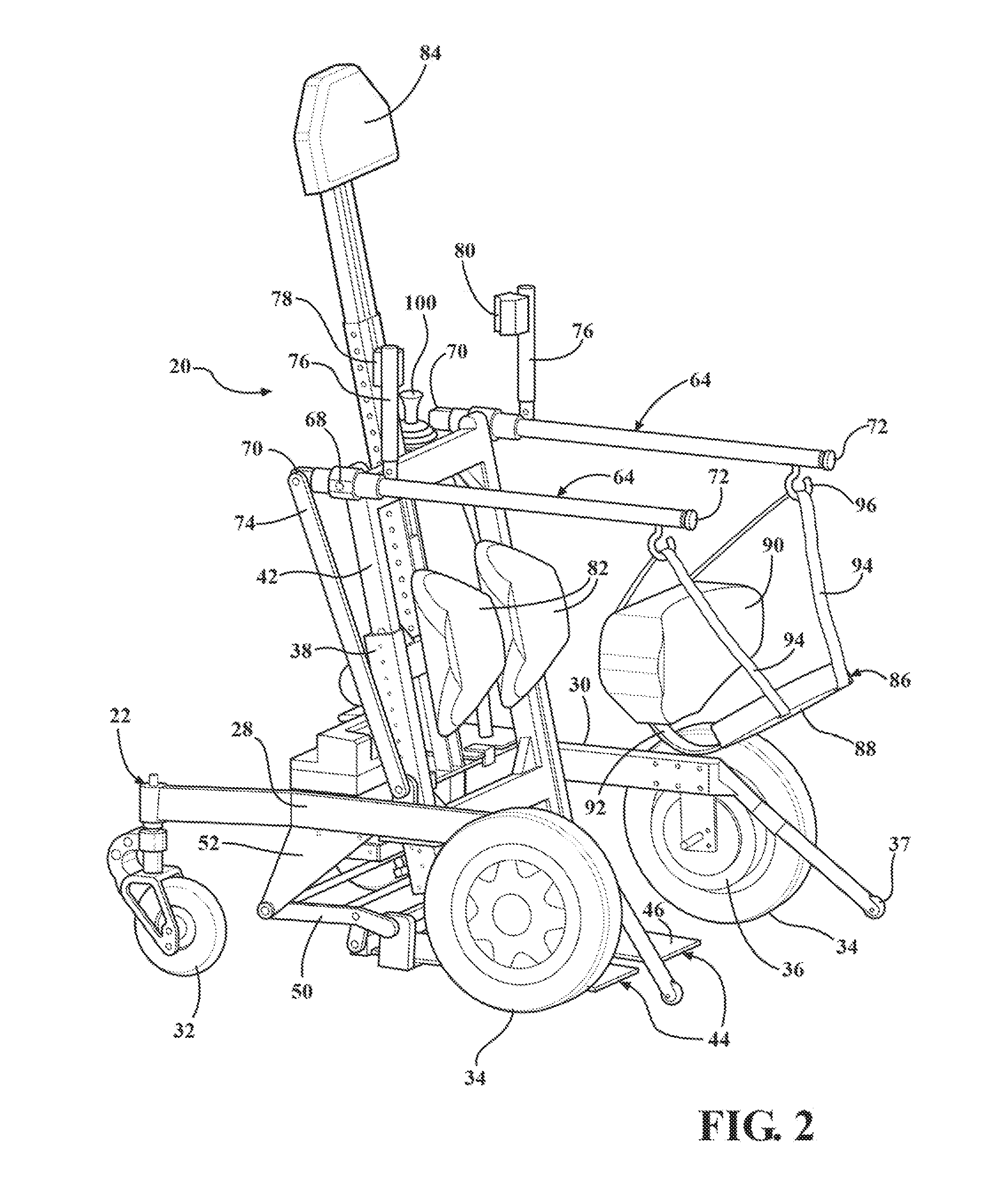Standing mobility and/or transfer device
a technology for wheelchairs and users, applied in the field of wheelchairs, can solve the problems of inconvenient and convenient transfer of users from ordinary chairs or standard wheelchairs into standing positions, limited in their ability to transport users over a wide range of terrains, and often painful secondary complications for wheelchair users
- Summary
- Abstract
- Description
- Claims
- Application Information
AI Technical Summary
Benefits of technology
Problems solved by technology
Method used
Image
Examples
Embodiment Construction
[0029]Referring to the figures wherein like numerals indicate like or corresponding parts throughout the several views, a standing mobility and / or transfer device for handicapped individuals is generally shown at 20 in FIGS. 1-8. The device 20 includes a mobile base, generally indicated at 22, which in one example is a frame-like construction defined by a front edge 24, back edge 26, and left and right edges 28, 30 respectively. Of course, platform style and other constructions for the mobile base 22 are within the scope of this invention. In the preferred embodiment, the mobile base 22 includes two front wheels 32 and two rear wheels 34 attached to forward and rearward extensions of the left 28 and right 30 edges, respectively. In alternative embodiments fully contemplated by this invention, the device 20 may include more or less than four wheels, including for example the two-wheel dynamic balancing devices popularized by Segway, three-wheel devices, five- and six-wheel devices an...
PUM
 Login to View More
Login to View More Abstract
Description
Claims
Application Information
 Login to View More
Login to View More - R&D
- Intellectual Property
- Life Sciences
- Materials
- Tech Scout
- Unparalleled Data Quality
- Higher Quality Content
- 60% Fewer Hallucinations
Browse by: Latest US Patents, China's latest patents, Technical Efficacy Thesaurus, Application Domain, Technology Topic, Popular Technical Reports.
© 2025 PatSnap. All rights reserved.Legal|Privacy policy|Modern Slavery Act Transparency Statement|Sitemap|About US| Contact US: help@patsnap.com



